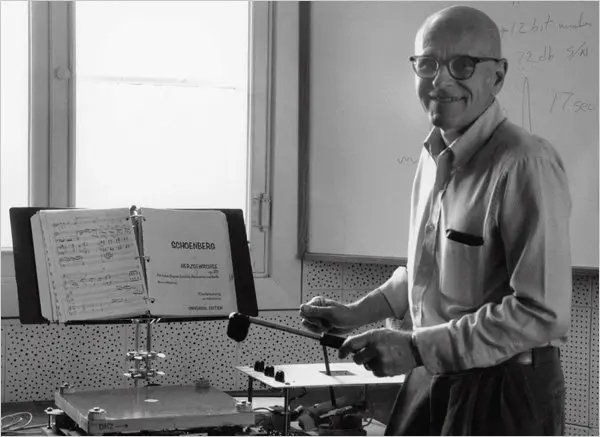HISTORY OF GENERATIVE ART - Generative Music
Aaron Penne and Boreta, Rituals - Venice #874 & #384, 2021, Source: ritualsalbum.xyz
In today’s History of Generative Art series, we explore a fascinating genre, generative music. Unlike traditional composition, generative music is created through algorithmic or rule-based systems that enable continuous variation and non-repetitive structures. Its development has closely followed technological advancements, from early computer music experiments to contemporary AI-generated works.
The tables of Wolfgang Mozart's 'Musikalisches Würfelspiel’, Source: ai.gopubby.com
Max Mathews, Pioneer in Making Computer Music, Source: nytimes.com
The idea of musical randomization dates back to the 18th century with the Musikalisches Würfelspiel, which allowed composers to create pieces by rolling dice. As technology advanced, music’s mathematical nature made it ideal for computational approaches. Unlike visual media, audio data requires significantly less computational power, enabling digital manipulation well before real-time video processing became feasible.
The first breakthrough came in 1956, when Max V. Mathews developed MUSIC I, the first digital audio synthesis program at Bell Laboratories. In the 1980s and 1990s, David Cope created Experiments in Musical Intelligence (EMI), a system that analyzed and recomposed music in the styles of Bach, Mozart, and Rachmaninov. The results were so convincing that some listeners mistook them for human compositions.
Lejaren Hiller at the Experimental Music Studio, Source: burchfieldpenney.org
While scientists were developing computational approaches, several composers had already begun experimenting with algorithmic and self-generating musical processes. Lejaren Hiller composed the “Illiac Suite” (1957), the first complete work generated by a computer algorithm, using stochastic methods and rule-based selection.
The term “generative music” was popularized by Brian Eno in 1995, when he collaborated with SSEYO’s Koan software to create music that continuously evolved based on predefined rules. Eno described this genre as an ever-changing system rather than a fixed composition. His 1996 release “Generative Music 1” demonstrated these principles, by showcasing tracks generated using the software. In 2024, a documentary about him, Eno, was released, following a similar approach, it uniquely re-edits itself for each screening. Trailer.
Brian Eno, Generative Music 1, 1996, Source: progarchives.com
Artists now use programming languages and algorithms to create rule-based systems, sometimes combining their generative visuals with generative sound. “Rituals – Venice” (2021) is an audiovisual work that merges Aaron Penne's visuals with Boreta's meditative music. The calming, immersive experience was released on Art Blocks. Its code generates a continuous, non-repeating output for over 9 million years.
AI has also influenced generative music. Deep learning techniques, such as those used in DeepMind WaveNet (2016), have enabled realistic neural synthesis of sound. In 2023, Patten released “Mirage FM”, one of the first full-length albums composed entirely with Riffusion, a new advanced technology. The album transforms written descriptions into dreamlike compositions that blend pop, techno, hip-hop, R&B, and ambient.
AI and blockchain have enabled new methods of composition, distribution, and interaction in generative music. While the field faces challenges in areas such as creative control, authorship, and long-term viability, the genre remains a subject of study and experimentation in both artistic and technological contexts.






